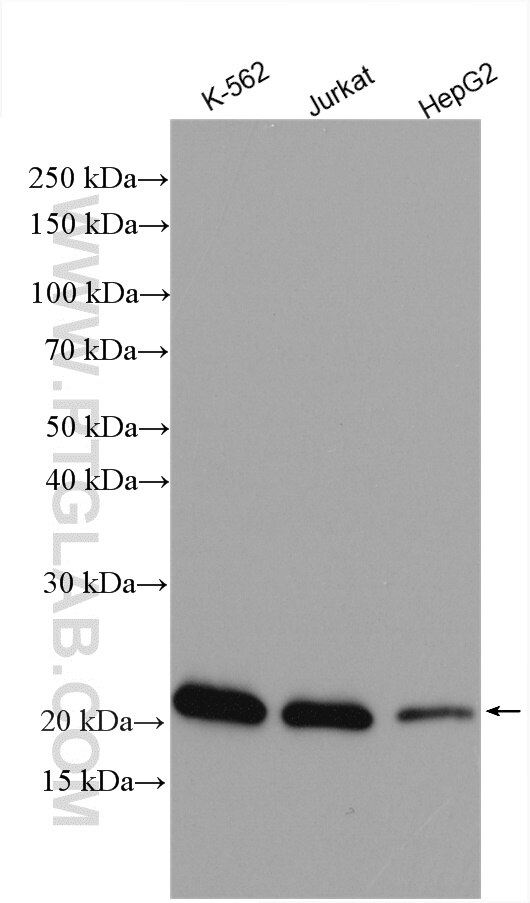C6orf108 Polyclonal antibody
C6orf108 Polyclonal Antibody for WB, ELISA
Host / Isotype
Rabbit / IgG
Reactivity
human
Applications
WB, ELISA
Conjugate
Unconjugated
Cat no : 25596-1-AP
Synonyms
Validation Data Gallery
Tested Applications
| Positive WB detected in | K-562 cells, Jurkat cells, HepG2 cells |
Recommended dilution
| Application | Dilution |
|---|---|
| Western Blot (WB) | WB : 1:5000-1:50000 |
| It is recommended that this reagent should be titrated in each testing system to obtain optimal results. | |
| Sample-dependent, Check data in validation data gallery. | |
Product Information
The immunogen of 25596-1-AP is C6orf108 Fusion Protein expressed in E. coli.
| Tested Reactivity | human |
| Host / Isotype | Rabbit / IgG |
| Class | Polyclonal |
| Type | Antibody |
| Immunogen | C6orf108 fusion protein Ag22336 |
| Full Name | chromosome 6 open reading frame 108 |
| Calculated Molecular Weight | 174 aa, 19 kDa |
| Observed Molecular Weight | 23 kDa |
| GenBank Accession Number | BC011683 |
| Gene Symbol | C6orf108 |
| Gene ID (NCBI) | 10591 |
| RRID | AB_2880150 |
| Conjugate | Unconjugated |
| Form | Liquid |
| Purification Method | Antigen affinity purification |
| Storage Buffer | PBS with 0.02% sodium azide and 50% glycerol pH 7.3. |
| Storage Conditions | Store at -20°C. Stable for one year after shipment. Aliquoting is unnecessary for -20oC storage. 20ul sizes contain 0.1% BSA. |
Background Information
C6orf108 also named as DNPH1, catalyzes the cleavage of the N-glycosidic bond of deoxyribonucleoside 5'-monophosphates to yield deoxyribose 5-phosphate and a purine or pyrimidine base. Deoxyribonucleoside 5'-monophosphates containing purine bases are preferred to those containing pyrimidine bases (PMID: 24260472). Expressed at low levels in brain, colon, lung, peripheral blood leukocytes, placenta, small intestine, and thymus. Expressed at high levels in heart, kidney, liver, skeletal muscle and spleen. Overexpressed in a significant proportion of breast cancers (PMID: 18726892).
Protocols
| Product Specific Protocols | |
|---|---|
| WB protocol for C6orf108 antibody 25596-1-AP | Download protocol |
| Standard Protocols | |
|---|---|
| Click here to view our Standard Protocols |


